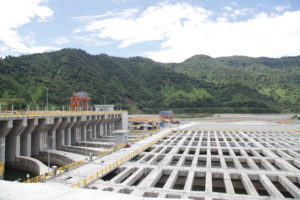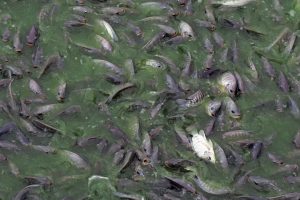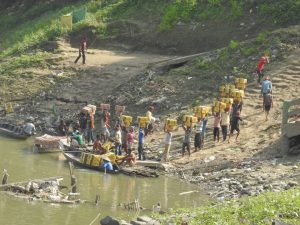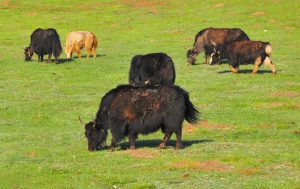In the southern region of Pakistan’s Khyber Pakhtunkhwa’s province wheat yields are being adversely affected by climate change. An increase in temperature is not only affecting wheat production but has also forced many farmers to abandon sowing the crop altogether.
Wheat is an important strategic agricultural commodity and contributes to about 2.2% of the country’s total GDP.
And while wheat is grown on a large-scale in the province, 67% of the land on which wheat is cultivated is rain-fed area — which means its yield depends almost entirely on timely and adequate rainfall.
But in a country where farming is mostly dependent on the regularity of rainfall, agronomists predict that by the end of the century, the temperature and precipitation required for the sowing of wheat and maize crops will cross the ‘optimal temperature limits’, posing serious problems for the production of the two major food crops.
Subsequently, the livelihood of farmers, particularly small-scale farmers associated with the production of wheat, is at risk of being endangered.
Plight of the farmer: To grow or not to grow?
As a result of a delay and decrease in winter rains, 70-year-old Habibur Rehman, a small-scale farmer from the southern district of Karak, stopped harvesting wheat on his land five years ago.
“I quit wheat growing after my bad experiences with the crop for two consecutive seasons,” he told Dawn.com, adding, that the yield was not equivalent to the cost so he decided to spend the money on purchasing better quality wheat from the market rather than wasting it on growing his own crop.
Rehman says farmers wait for rains during the sowing period, but when rain and moisture in the soil are not enough for proper germination of the seeds, they avoid planting them.
According to him, “The ants and birds take away the seeds due to lack of proper moisture in the soil, which is why many farmers have stopped taking risks.”
Rehman is not the only farmer who has stopped sowing wheat on his land. Hundreds of farmers in the southern districts of Lakki Marwat, Karak and Tank say they avoid the risk of blowing their money off on wheat cultivation in increasingly unsustainable temperatures.
Studies highlight troubling shifts in climate change
Various studies conducted by the University of Agriculture, Peshawar (AUP), reveal that farmers in the province have perceived a change in rainfall pattern and distribution along with an increase in temperature, particularly in rain-fed areas, and have already started to quit growing wheat due to a delay in winter rains.
Research highlights that temperatures will cross optimal limits in the next 60 to 80 years in the southern and central parts of Khyber Pakhtunkhwa province, where wheat production will be further affected; while, in the upper districts including Dir Upper, Dir Lower and Shangla the temperature for wheat and maize farming will reach the optimal temperature.
An unpublished climate change scenario study conducted in 2018 by the Climate Change Centre of AUP for the above-mentioned districts was piloted by the department and outlines the period between 2011 to 2040. Forecasting Impact of Climate Change on Key Crops of 10 District of Khyber Pakhtunkhwa finds that winter rains in southern and central KP are declining dramatically by 8% to 16%, every decade.
The southern and central parts of the province will be facing the real challenge of producing the two main crops, while, the upper parts of the province will achieve the optimal temperature needed for wheat cultivation.
However, in the upper KP region where climate change will bring positive impacts for wheat production, there isn’t enough cultivable land to compensate for the negatively impacted southern areas, albeit with vast plain lands.
Changing seasons: Shrinking spring and a dwindling autumn
Inamullah of the University of Agriculture, who was part of the team that conducted a survey on forecasting impacts of climate change on key crops, says, “From my personal experience, I can say that our four seasons have received a blow from climate change. Spring and autumn have been captured by winter and summer and the duration of summer itself has increased, squeezing out the rest.”
Sharing his personal observation about this shift in the seasons, Inamullah added, “Winter used to start from mid-September, and now starts showing signs only after mid-November. Similarly, autumn has squeezed down to almost 15 days by the summer and in the same way, spring has been grabbed by winter. Furthermore, the duration of winter rain spell has reduced to three days in the province while 30-40 years back winter rain spills would continue for 20 days.”
Inamullah continues that wheat, being a temperate crop, is grown as the main crop in Pakistan for its use in our daily food. “Wheat is not a crop of our region but we grow it for food security.”
He further explains that its cultivation can be done between 12 to 25-degree centigrade and that after its cultivation, winter comes with its temperature drops to 5-6 degrees centigrade, which is then followed by a summer in which the crop gets ready for reaping.
According to Inamullah, this timeframe has now been affected by a delay and decline in winter rains and an increase in temperature, which is why the cultivation of the crop is delayed from September to November owing to low moisture in the soil, much needed for germination of seeds.
Giving the example of district Lakki Marwat, which was part of their survey, he says, “we are afraid that adverse effects of climate change in Lakki Marwat will start showing themselves in no less than 15 to 20 years.”
As per the study, the upper-temperature limits for optimum production of wheat in Lakki Marwat may be reached by 2080, posing serious problems in the coming 60 years.
Optimal temperature still a while away
Muhammad Akmal, a professor in the Agronomy Department at AUP, says, “Due to climate change, September, October and November will be the driest months in Pakistan. And that is the period in which the wheat crop is cultivated. While April and May—in which the crop is to be harvested—will be the wettest months, thus the ready-to-harvest crops will be damaged by rust and smut diseases, which flourish in moisture conditions.”
As per the unpublished the study, in central KP—including Mardan and Nowshera—the upper limits of temperature for wheat production will reach its limit by 2090, while, in Mansehra and Buner the upper limits of temperature for wheat will be reached by the end of this century. In Bannu, the higher temperature limits may not be reached by the end of this century.
Areas including Shangla and Dir Upper, which have a cold temperature, will be able to get to the optimal temperature required for wheat cultivation by 2080. Dir Lower will enter into the temperature limits needed for the crop cultivation by the next year and there will be no problem for the cultivation of wheat.
Similarly, in Abbottabad, the temperature will reach its optimal limits by 2060 and will be good for the production of crops in the current century.
See: KP farmers resort to medieval tricks as Pakistan declares locust emergency
This article was first published in The Dawn, and has been republished with permission.
![<p>Pakistan’s explosive population growth means less water for everybody [image by Ghulam Rasool]</p>](https://dialogue.earth/content/uploads/2016/06/Watermill-by-GR.jpg)







